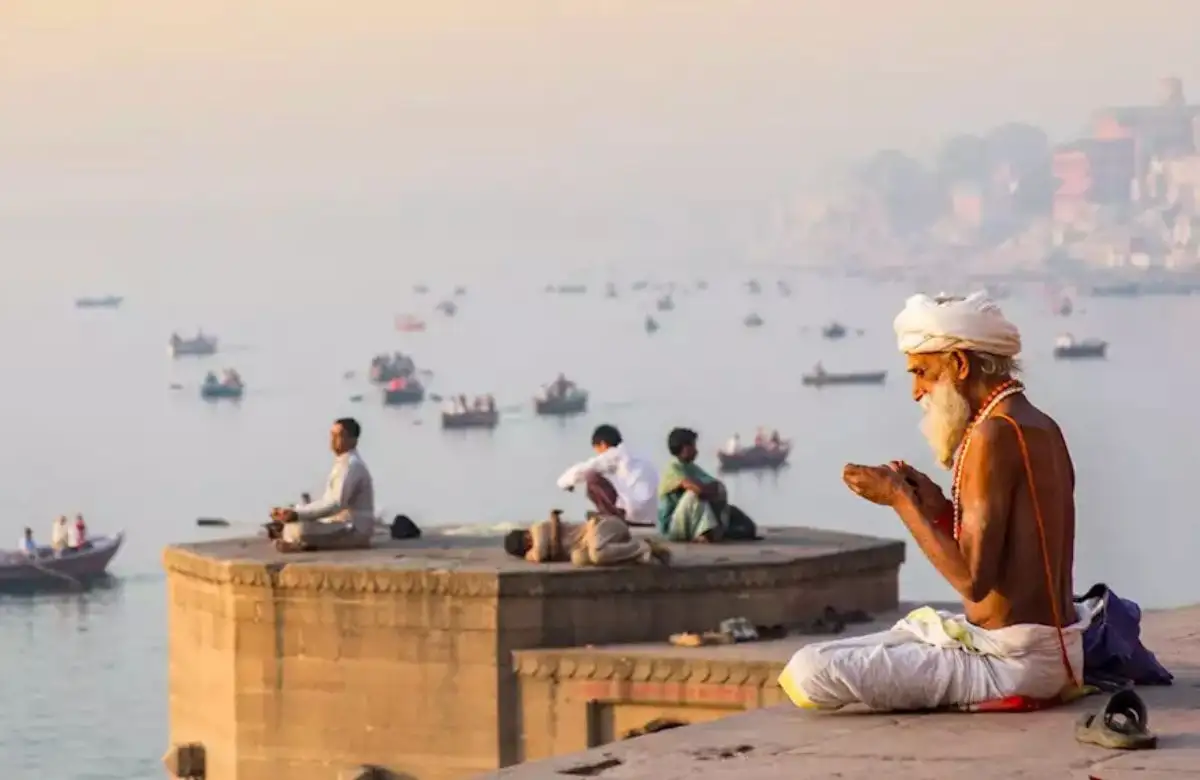Top 10 Must-visit Places in Varanasi, Uttar Pradesh

Get in touch with our Staff members and get discounted offers for your trip.


Varanasi, also known as Kashi or Banaras, is one of the oldest and most sacred cities in the world. Situated along the banks of the holy Ganges River, it is a spiritual and cultural epicenter of India. A visit to this mystical city offers an experience of divine serenity, ancient temples, vibrant ghats, and an unforgettable glimpse into the essence of Hindu traditions.
If you're planning a Trip to Varanasi, here are 10 must-visit places that should be on your itinerary.
Kashi Vishwanath Temple is the most revered temple in Varanasi and one of the 12 Jyotirlingas of Lord Shiva. The temple has been a center of faith for centuries and is mentioned in several Hindu scriptures. Devotees from across the world visit this temple to seek blessings and experience its divine aura. The temple's golden spire, built with nearly 800 kg of gold, adds to its grandeur.
For a hassle-free experience, VIP darshan tickets are available, which allow quicker entry without standing in long queues. These tickets can be booked online or through authorized travel agents like Nagarjuna Travels.
Dashashwamedh Ghat is the most famous and lively ghat in Varanasi, where the magnificent Ganga Aarti is performed every evening. This ghat is believed to be the site where Lord Brahma performed a Dashashwamedh Yajna (ten-horse sacrifice) to welcome Lord Shiva.
The evening Aarti at this ghat is a mesmerizing experience, with priests performing synchronized rituals with huge fire lamps, chanting mantras, and ringing temple bells. Thousands of devotees and tourists gather here daily to witness this grand spectacle.
Located 10 km from Varanasi, Sarnath is one of the most important Buddhist pilgrimage sites. It was here that Lord Buddha gave his first sermon after attaining enlightenment, making it a sacred place for followers of Buddhism.
Key attractions at Sarnath include:
Dhamek Stupa – A massive stupa marking the spot of Buddha's first sermon.
Chaukhandi Stupa – Another important historical monument.
Sarnath Archaeological Museum – Houses the famous Lion Capital of Ashoka, which is now India's national emblem.
Manikarnika Ghat is one of the most significant and sacred cremation sites in India. It is believed that cremation at this ghat leads to Moksha (liberation from the cycle of rebirth). The eternal flame, which has been burning for centuries, signifies the uninterrupted cycle of life and death.
Although a cremation ground, this place offers a profound spiritual experience, showing the deep-rooted beliefs of Hindu traditions.
Located at the confluence of the Ganges and Assi River, Assi Ghat is one of the quieter and more scenic spots in Varanasi. It is a favorite place for yoga practitioners, spiritual seekers, and artists. The morning Ganga Aarti here is equally mesmerizing but less crowded compared to Dashashwamedh Ghat.
Many cafes and cultural programs happen around this ghat, making it a perfect spot to relax and enjoy the divine ambiance of Varanasi.
Built in the 18th century by Raja Balwant Singh, Ramnagar Fort is a historic palace on the eastern bank of the Ganges. The fort features:
A Museum displaying vintage cars, royal palanquins, old weaponry, and antique clocks.
A grand Durbar Hall where kings once held court.
The fort also hosts the famous Ramlila festival, a month-long theatrical performance of the Ramayana, which attracts visitors from all over India.
This elegant white marble temple is dedicated to Lord Rama and is named after Saint Tulsidas, who wrote the Hindi version of the Ramayana, the Ramcharitmanas, here. The temple walls are beautifully inscribed with verses from the epic, making it a must-visit for devotees.
Unlike traditional Hindu temples, Bharat Mata Temple is dedicated to the country instead of a deity. The temple houses a three-dimensional relief map of India, carved out of marble, symbolizing India's cultural unity.
It was inaugurated by Mahatma Gandhi in 1936 and represents a patriotic tribute to the nation.
BHU is one of India's largest and most prestigious universities. Its campus houses the New Vishwanath Temple, a replica of the original Kashi Vishwanath Temple, built by the Birla family. The temple is made of white marble and is open to all visitors.
The university campus also has a museum, art galleries, and a beautiful library, making it a cultural landmark in Varanasi.
Located inside the Kashi Vishwanath Temple complex, Gyanvapi Well is believed to be the place where the original Shivalinga was hidden during the Mughal invasions. This well holds great historical and religious significance and is considered sacred by devotees.
The ideal time to visit Varanasi is:
October to March – Pleasant weather and major festivals like Dev Deepawali and Mahashivratri.
April to June – Hot and dry, but fewer crowds.
July to September – Monsoon season, offering a unique charm but occasional flooding.
By Air: Varanasi’s Lal Bahadur Shastri International Airport (VNS) connects to major Indian and international cities.
By Train: Varanasi Junction (BSB) and Mughalsarai Junction (DDU) are the main railway stations with excellent connectivity.
By Road: Well-connected by national highways to major cities like Delhi, Lucknow, and Patna.
For a well-planned and comfortable Varanasi tour, Nagarjuna Travels offers customized packages including temple visits, ghats, Sarnath excursions, VIP Darshan at Kashi Vishwanath Temple, and cultural experiences.
Contact us for a seamless and spiritually enriching journey to the heart of India!